On an average Saturday, a celebration was happening at The Lesbian, Gay, Bisexual, & Transgender Community Center (The Center). In an auditorium beneath the legendary Keith Haring bathroom mural, people moved from table to table in excitement. Once a year they all gather in this room for one thing — queer zines.
The Center held their eighth annual New York Queer Zine Fair on Oct. 7 where 49 participating artists displayed their works to the public for sale. Hand-made zines, clothing, stickers, small-run publications, and more graced the tables.
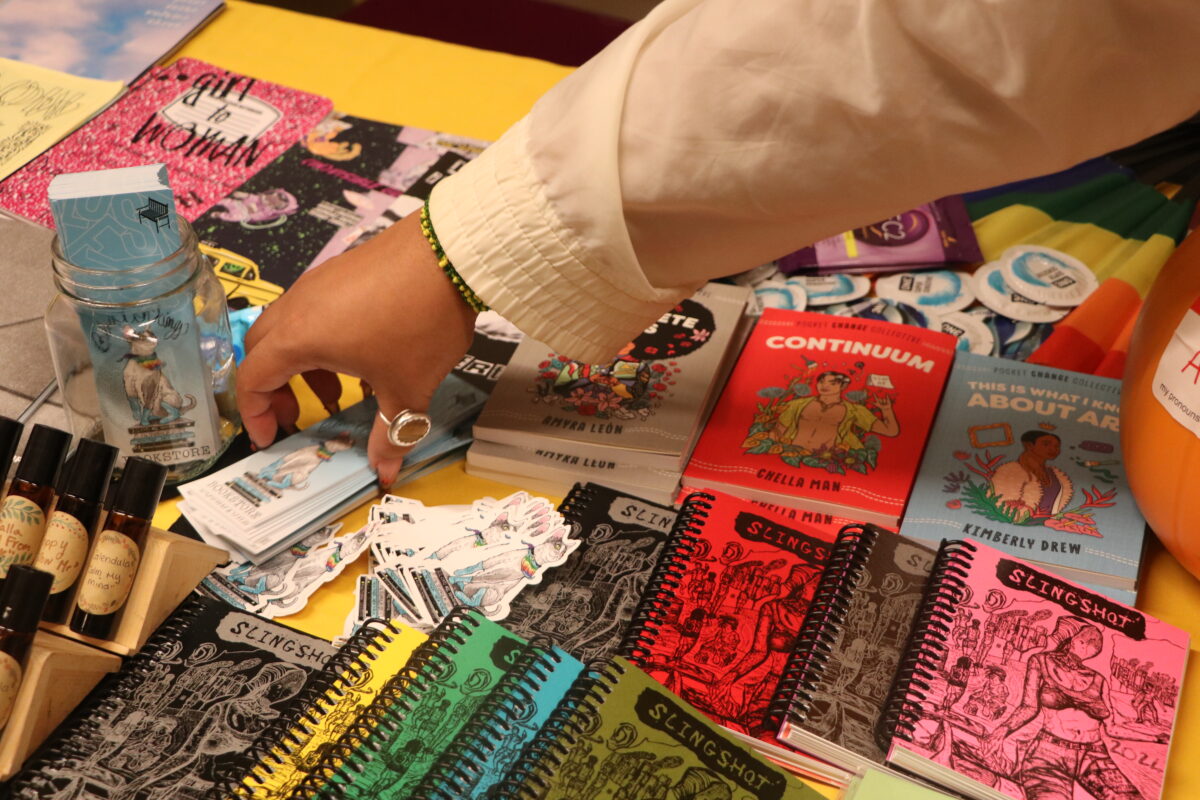
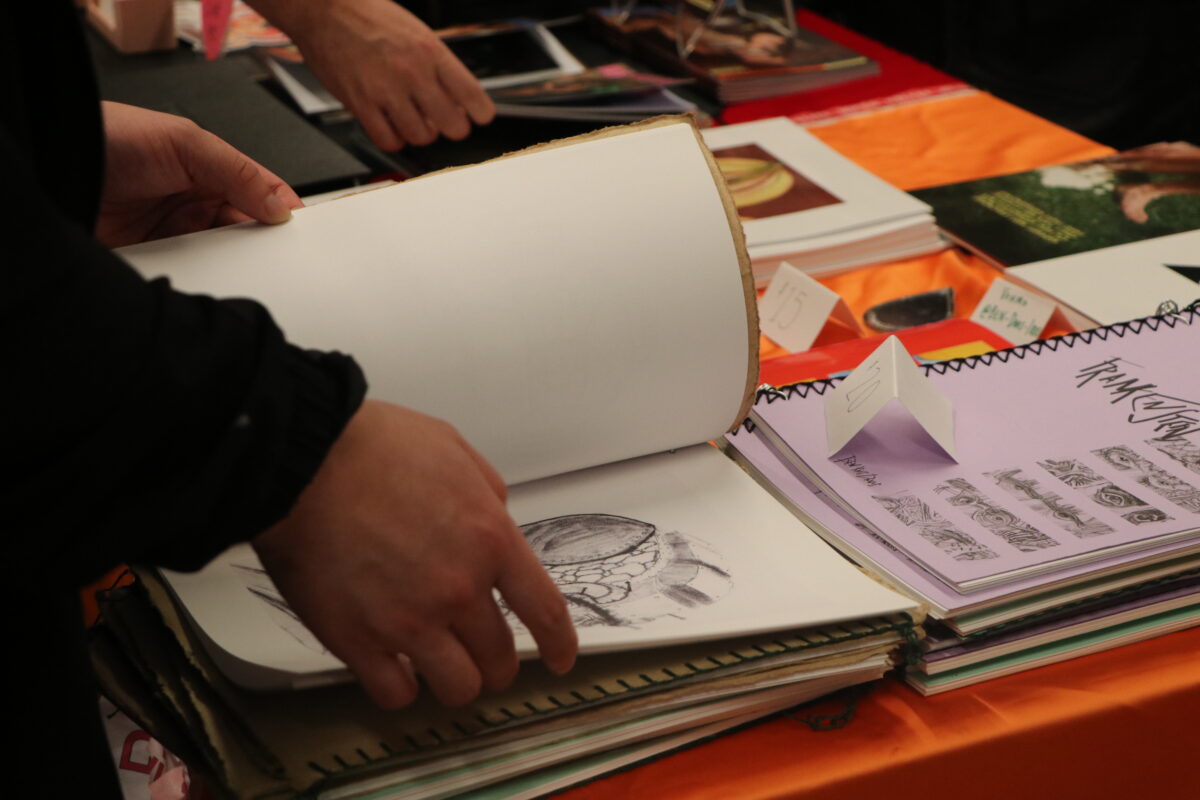
A zine is a self-published work: a mini-magazine that can contain writings, collages, and artwork. Zines are full of self-expression and creativity. People have been making and reading zines for decades. They’re easy to create and offer freedom from censorship because they are self-published. In a mainstream society that has intentionally overlooked queer history, zines are used to educate others about the history and movements that pertain to queer people.
Parsons School of Design Professor Jaxson Stone displayed their work, which they described as, “scribbly, punk-rock cartoons,” at the annual fair. Copies of “Long Live the Weed Bodega,” their zine examining the design of weed dispensaries in New York, glowed beneath the warm lights of the auditorium.
But making zines was never about making them to be bought, Stone explained. “I make these for myself,” they said.

Trying to find a community and space in the world to express yourself is not easy. Many of the artists at the fair shared a similar experience when it came to why they make their own zines.
“There’s not a lot of spaces that actively publish queer writing. Or if they are, they’re very niche,” writer and visual artist Jason Haaf said. His zine “Almost Boyfriend” consists of a collage-like style of homoerotic artwork combined with his words.
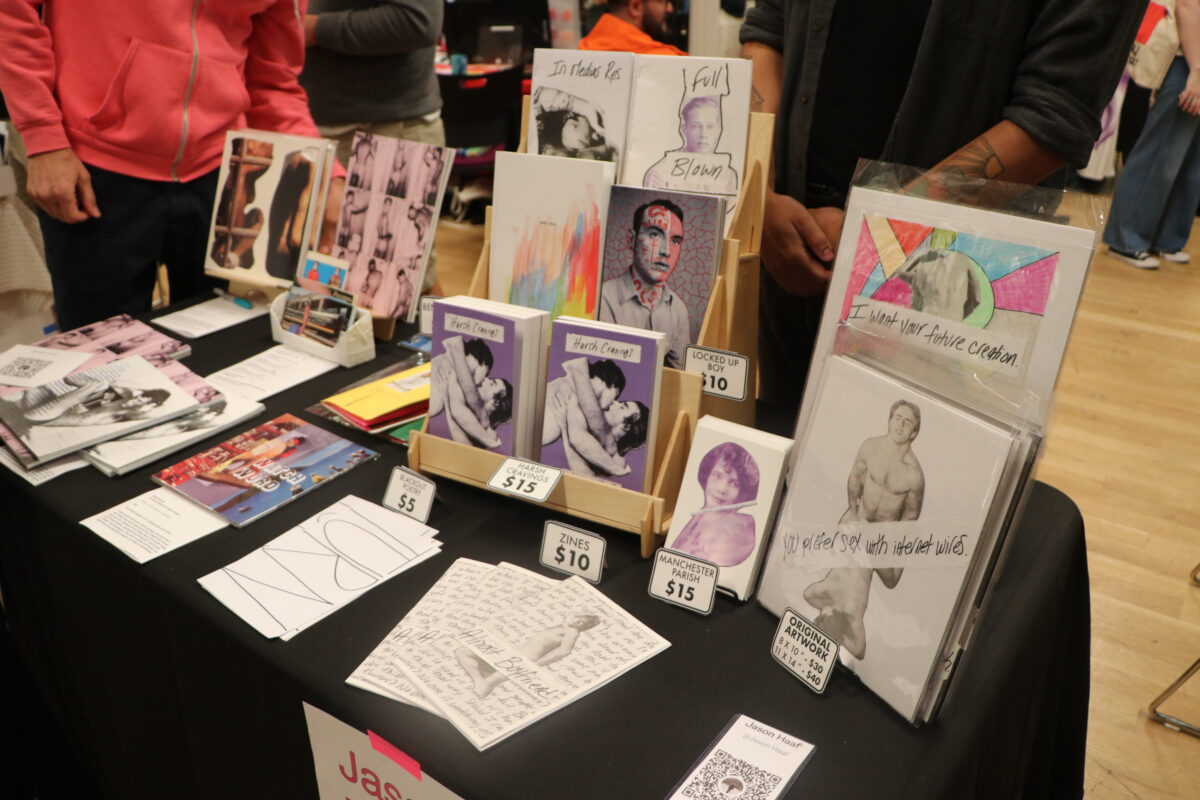
While most zines are made of paper, some artists experiment with more unconventional materials.
“This is my testosterone zine. I’ve been on testosterone for a little over a year now, and I have all of these packets,” multimedia artist Ryan Pic said, while picking up one of their testosterone zines — testosterone packets sewn together with string — stacked neatly on their table. “I thought it would be cool to see if I could stitch them together in your traditional zine format. Part of it is cool to have a physical object that documents the passing of time.”

Ryan Pic’s table. Photo by Hiya Singh
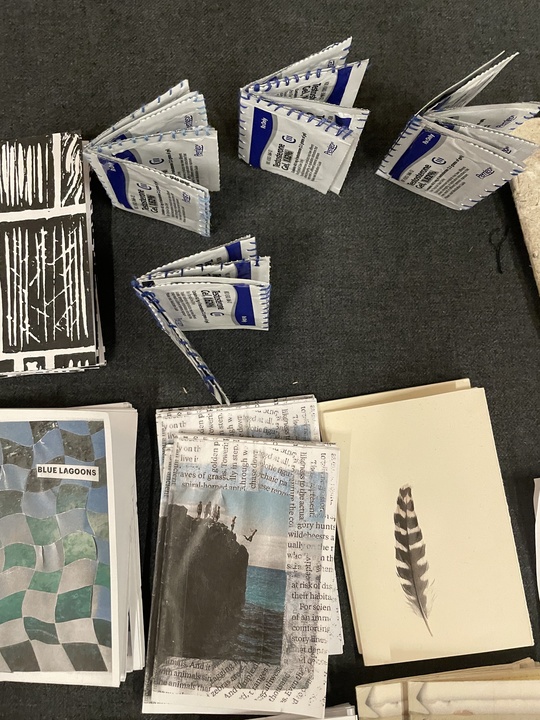
Each artist had their own unique style. Peruvian-born artist and author Carlo Quispe tackles power dynamics through the lens of alien invasion and disaster scenarios in his work “Uranus Comics.” Avid cat lover and artist J. Morrison combines felines and social commentary in his collection of visual art “HOMOCATS.”
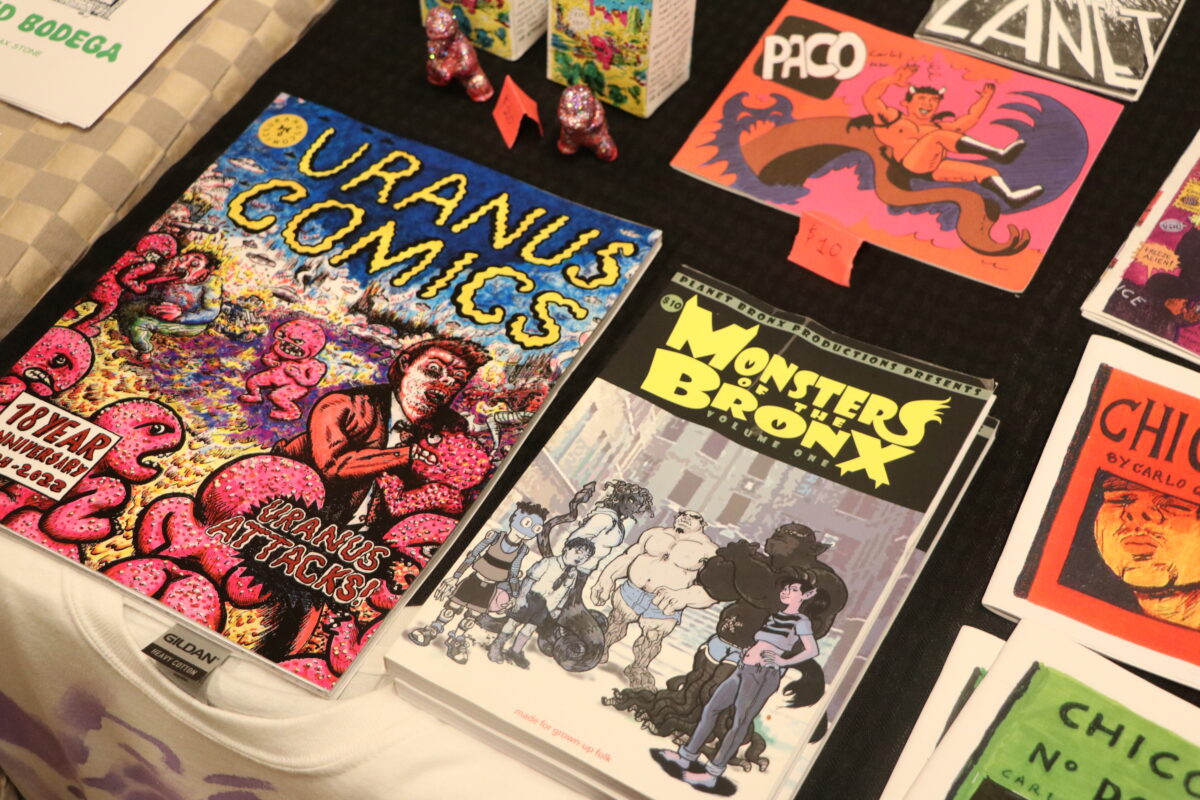
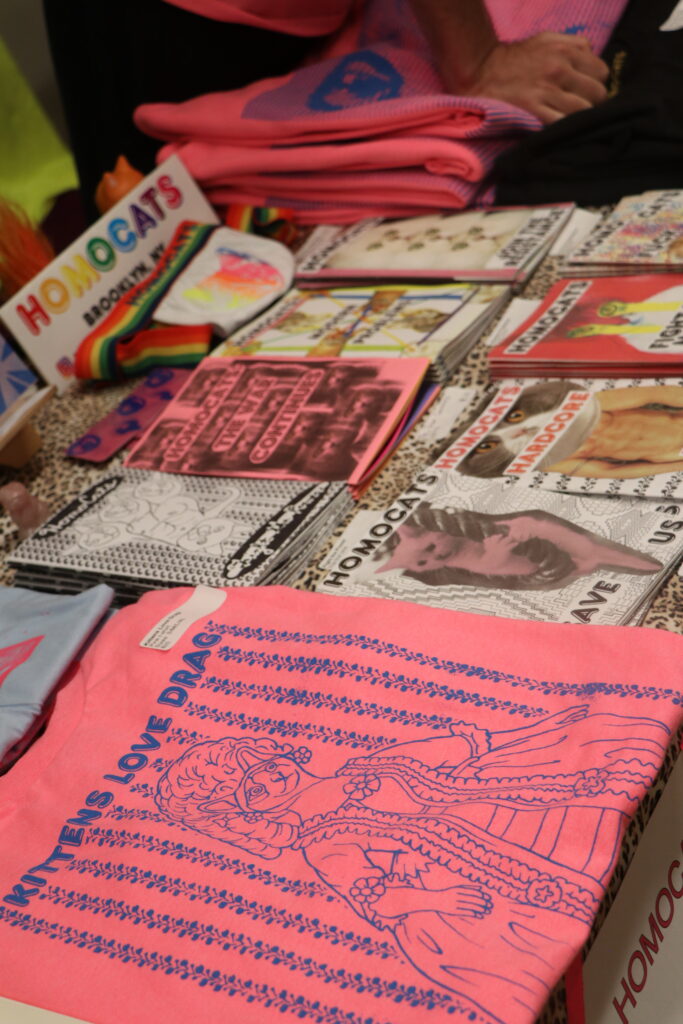
The event was a celebration of individuality. Everyone had their own table, their own work, but was there for one reason — to share their art. The fair served as a place where LGBTQIA+ individuals and artists could gather to express themselves freely.
The zine is a part of history, a movement, a sense of self — an important part of self expression and storytelling. “For a long time I resisted incorporating the craft aspect of my training,” Pic said. “I found a cool intersection of degendering and reclaiming that skillset, but also making weird art.”

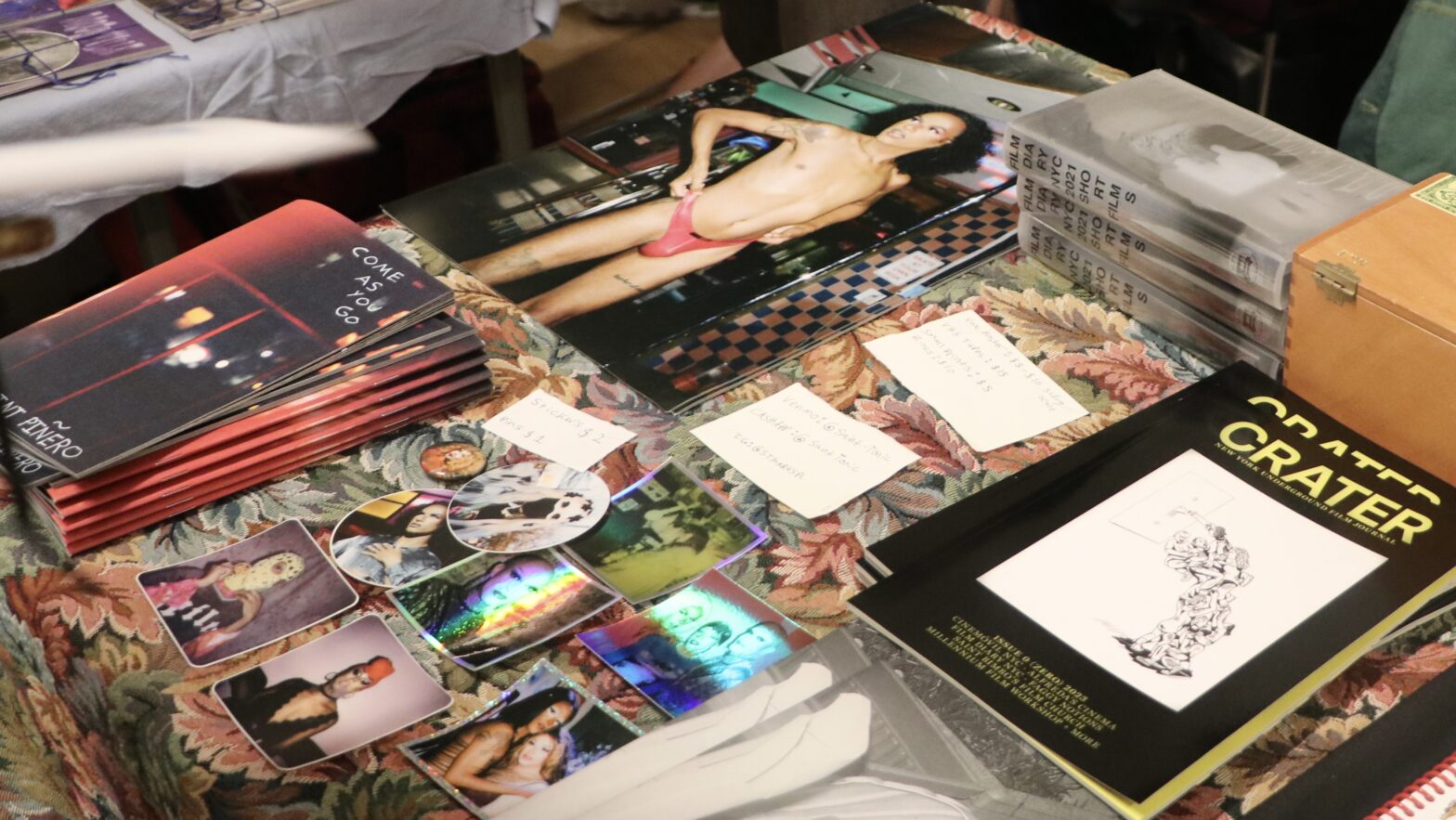






Leave a Reply